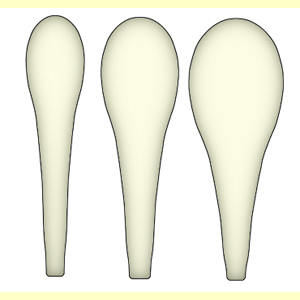
This feature relates to the overall shape of cheilocystidia, in side view, irrespective of the shape of the apex (Cheilocystidia apex shape) and any branching (Cheilocystidia branched). The different shape states are simply based on where the widest point is, and the length/width ratio.
If the shape is described with modifiers such as 'narrowly' clavate or 'broadly' clavate, choose the state being modified (in this example, clavate). However, if the shape is described as 'slightly' clavate or 'subclavate', chose the state that otherwise matches (which will usually be cylindrical).
More than one shape can be present.
Choose this state if: the widest point is towards the apex. The cystidia are club-shaped. Another term for this shape is pyriform.
Basidioles are often present on the face and edge of lamellae. They are narrowly to broadly clavate (similar in overall shape to mature basidia). When cheilocystidia are clavate, they are obviously larger than basidioles, differently pigmented or have a thickened wall.
